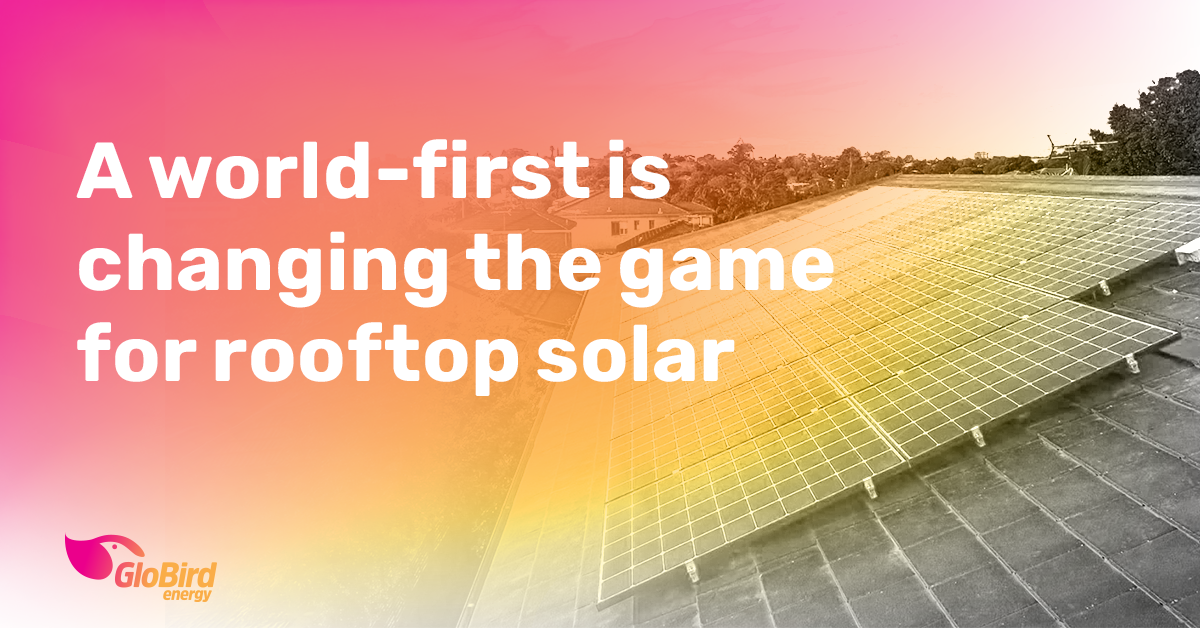Flexible export limits. It doesn’t sound like a big deal, but it is.
Rooftop solar owners will soon recognise it as a game-changer for them, and we see it as a real breakthrough in our quest to maximise the use of renewable energy.
Let’s start with the problem it’s solving: too much energy being generated by household rooftop solar arrays.
When (and where) too much electricity is available to be exported from solar panels into the local grid, the network’s capacity can simply be overloaded and overwhelmed.
As a result of this congestion, the network operators have little choice but to impose a cap on the amount of electricity households can export.
How did we get here?
As you probably know, Australia leads the world in the penetration of rooftop solar, with more than three million households – about a third of the total households in the country – having a system installed.
Naturally, in some places there are more and others less, but where there are more than the average “about one third”, it can be a lot more.
For example, in one of the places flexible export limits are currently being trialled, the Adelaide coastal suburb of Hallett Cove, there are more rooftop solar installations than private dwellings (according to Clean Energy Regulator data)!
The rate of solar ownership is so high that SA Power Networks (SAPN) reduced the fixed export limit for new installs from the standard 5kW to only 1.5kW.
In some parts of the country, network service providers have even export-limited homes to zero kilowatts.
What do “flexible export limits” mean?
In the simplest (and most relatable) terms, flexible export limits flag the potential for homeowners to make more money by exporting more solar energy.
Fixed export limits, as the name suggests, mean that there is a single hard cap on the amount of energy solar owners can export to the grid across an entire network all the time. Hence “fixed”.
Flexible export limits, on the other hand, allow the network and the homeowner to agree to having a much higher cap most of the time, as long as the network can dial that right back if and when it needs to.
So, in the case of the current SAPN trial, participating households can export up to 10kW (if they have a capable array and inverter) but SAPN can remotely turn down this flow to 1.5kW.
What happens to that “congestion” in the network?
You might wonder how households can possibly export at more than six times the fixed limit and not run into the issue that’s forcing other households to export much less.
While the fixed limit has to be set low to cover for all contingencies, the flexible limit doesn’t.
The “overloading” issue does still occur, but only about two per cent of the time. So, those are the times the network needs to dial things back.
Think of it this way: rather than having a 40km/h speed limit around schools and shops and 110km/h on highways, a fixed limit says “it’s 40km/h everywhere, just to be safe”.
Meanwhile, a flexible limit says: “let’s go 110km/h all the time – just be prepared to slow to 20 or even stop occasionally for road works”.
Will we be able to use more solar energy?
There is a significant amount of capacity in the network for the contribution coming from rooftop-generated solar to be increased, as long as energy is being moved at the right time.
A recent study by the Australian National University found that, if they had access to dynamic export limits, customers could export three times the energy they are exporting now.
In reality, fixed limits mean we’re “wasting” the opportunity to include a lot more rooftop solar in our energy mix.
For a start, most households currently export (and therefore generate) less than they could, if they had a reason to.
Meanwhile, fixed limits have always been a disincentive to installing systems with greater capacity.
The most common size for new installs is a 6.6kW array with a 5kW inverter, to match the standard export limit.
Given that the average Australian domestic house roof can accommodate a 10kW array, think of all the capacity that’s being missed because of the panels that are never installed.
When will you be able to opt in to flexible limits?
Last October, the Australian Energy Regulator (AER) released a paper on flexible export limits and asked for stakeholder submissions. The submissions they received were overwhelmingly in favour of the technology.
Inverters that can vary the amount they export in response to a signal from the network have recently come on the market, and more will be available soon.
From July 1 this year, all new solar installations in South Australia will have to be technically compatible with flexible export limits and the technology will become the norm across the state within a few years.
SAPN customers will be offered the option of a fixed limit of 1.5kW or a flexible limit that allows them to export up to 10kW. In other words, there will be a decent incentive to be flexible.
It’s expected that all states will introduce flexible export limits within the next five years, although it’s not yet clear whether they will also be opt-in/opt-out models.
The main thing to be sorted out is consumer protection regulations, as many people will be wary of signing up to a system that allows the networks to have complete control without any restrictions.
But keep in mind that the rest of the world is just starting to think about this change, so South Australia is ahead of the game.
